Toledo, Spain or Toledo, Ohio?
February 21, 2010
We’re continuing our theme of the 19th Century Hypertrophic City versus the Traditional City.
The basic characteristics of the 19th Century Hypertrophic City are:
1) Very wide streets, which are unfriendly to pedestrians although they were laid out 50-100 years before cars.
2) Very large buildings to go with the very wide streets. Actually, the 19th Century Hypertrophic City tended to start with Traditional City-style buildings of about 3-5 stories, but towards the end of the 19th century and the first half of the 20th century, the taller buildings were added.
3) Except for the very wide streets, which are dominatd by cars, there is typically little Non-Place in the 19th Century Hypertrophic City. Not too much Green Space or Parking Lots.
4) A tendency toward monolithic (large, with featureless walls) buildings and The Grid in all things, from street layout to architecture.
5) A preference for suburban-style farmhouse-on-a-quarter-acre format in residential areas wherever possible.
The basic character of the Traditional City is:
1) “Really Narrow Streets,” which is my terminology for a street that is a normal, usable size for a human being (“pedestrian”).
2) Generally small-scale buildings of 3-5 stories high.
3) No Non-Place
4) A tendency toward a more biomorphic form in design and street layout.
5) A preference for Traditional City urban design (townhouses, apartment buildings) in residential areas, even in very small villages.
But these are just words. Today, we’ll look at Toledo, Spain — a decent Traditional City — and Toledo, Ohio, which is a typical U.S. 19th Century Hypertrophic City.
Can you tell the difference?
Which do you like better?
Most importantly, if someone gave you a blank piece of paper, do you know how to design a city that is like Toledo, Spain instead of Toledo, Ohio?
Actually, you should try designing a place like Toledo, Ohio too. Then you would know how it is made, and thus what to avoid.
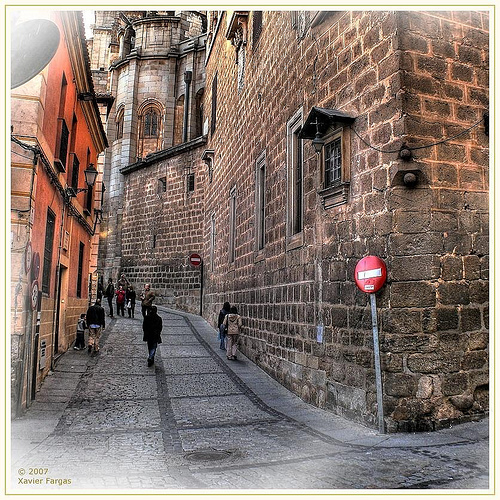
Toledo, Spain or Toledo, Ohio?
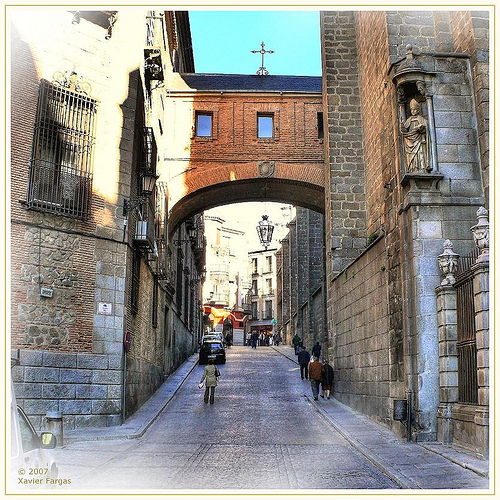
Actually, the European model tends to be a bit … stony. I would like to see more things at street level to interact with. Mostly shops and so forth. Maybe a little greenery in residential areas — window boxes or potted plants, or little pocket parks. A few more balconies, with French doors and so forth. (NO Green Space!)
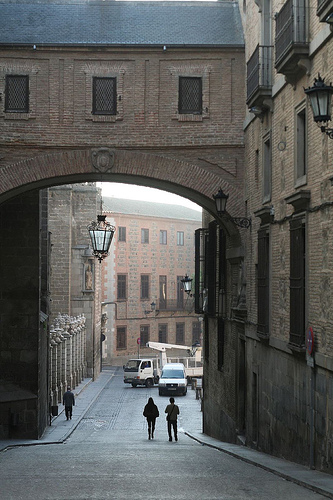
Not too many cars here either. They just sort of disappear when you make the streets narrow enough.
* * *
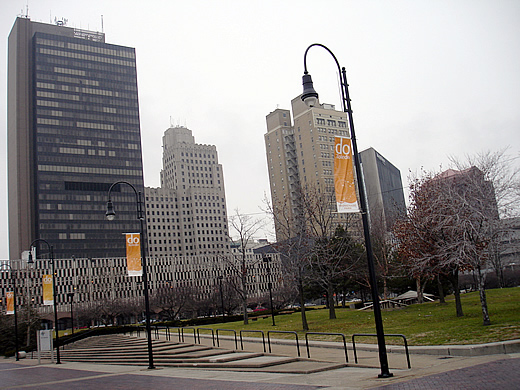
Spain or Ohio?
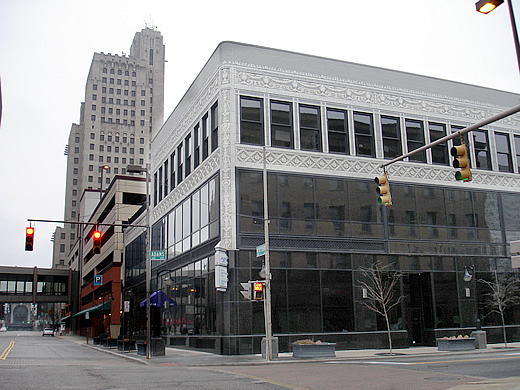
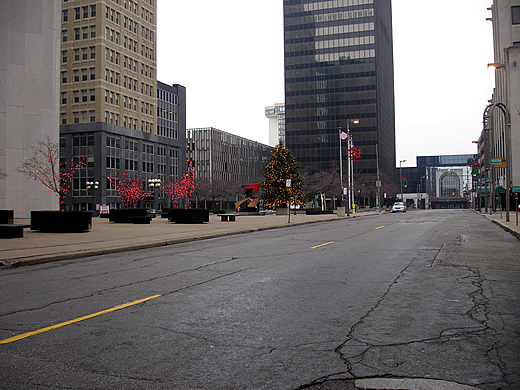
These are actually the nicer shots of downtown.
* * *
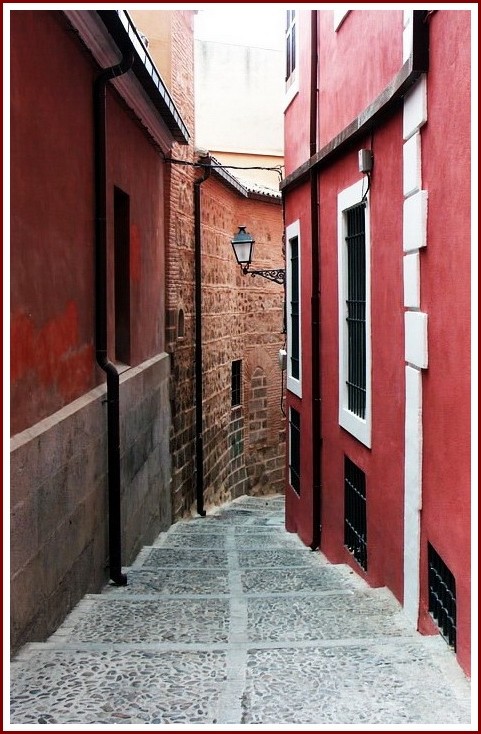
You know I like this sort of thing.
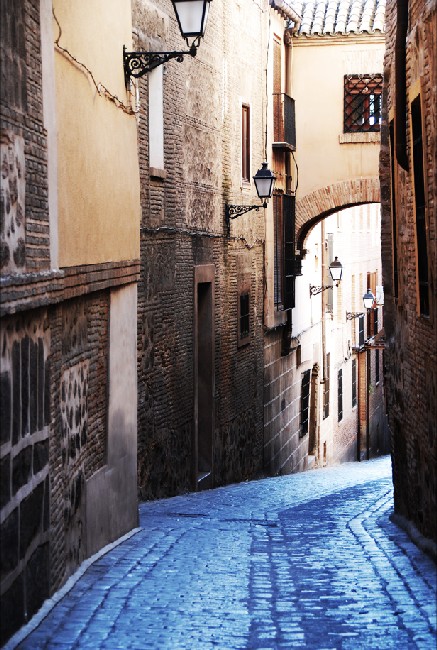
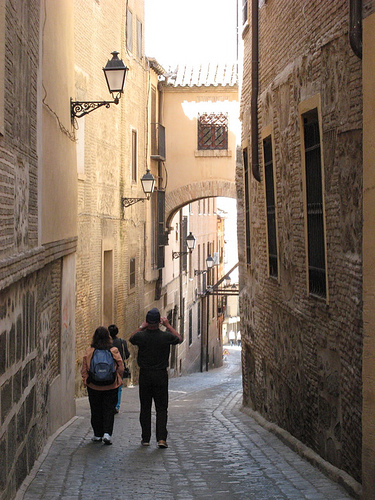
* * *
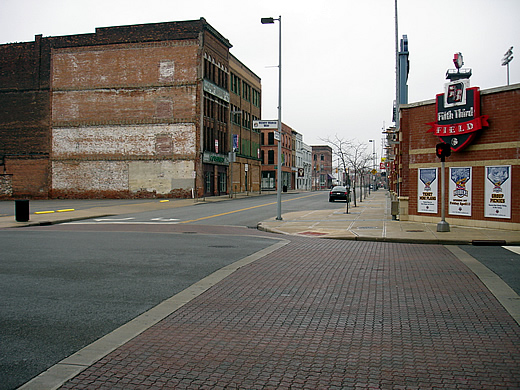
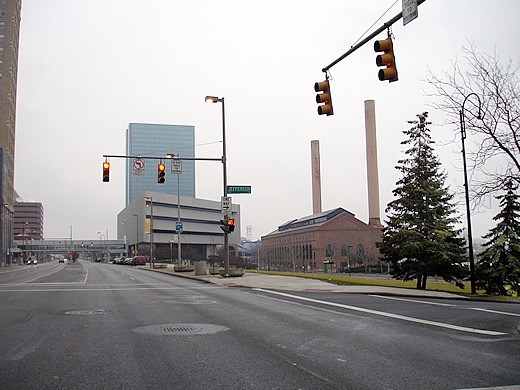
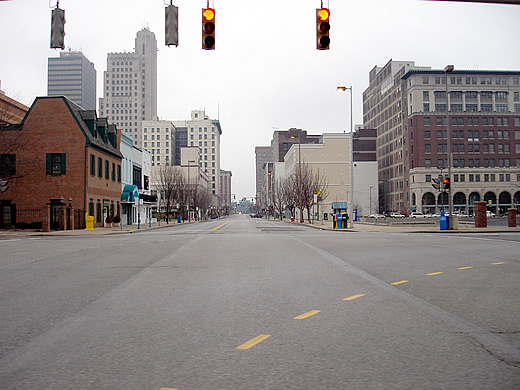
See what I mean about that hugemungous street in the middle? All the time.
* * *
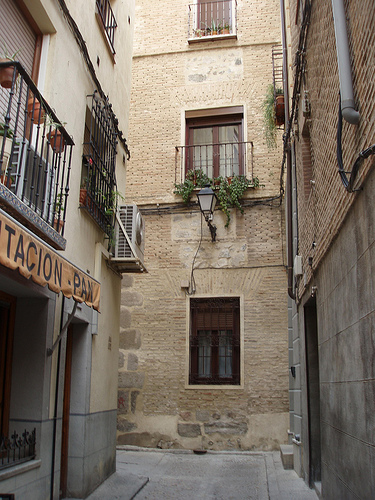
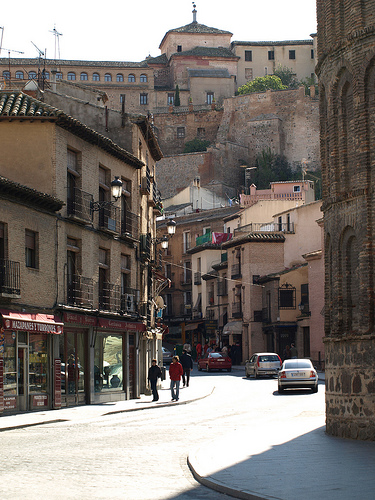
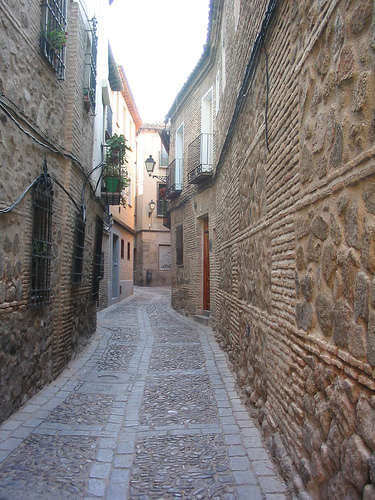
Toledo is a very old city, and Spain hasn’t been wealthy for about four hundred years. Still, this stuff looks good don’t you think?
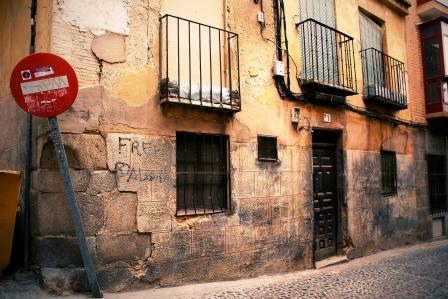
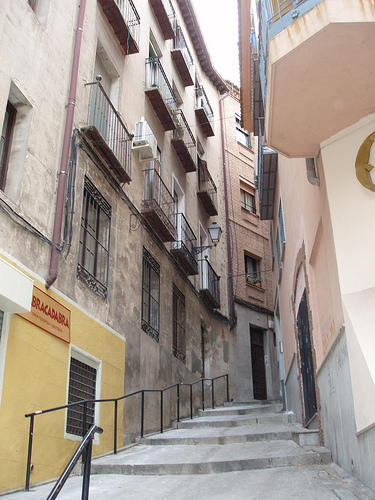
* * *
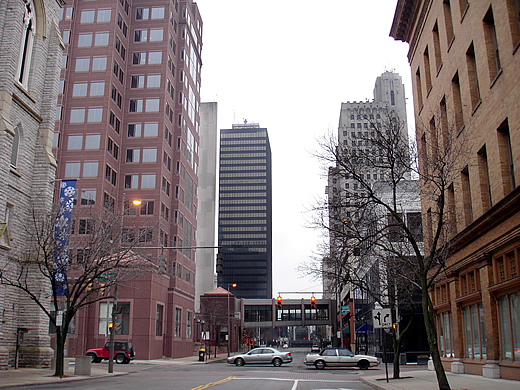
To be fair, some of Toledo, Ohio’s downtown areas are reasonably passable. Like I said, 19th Century Hypertrophism is oddly best at its most hypertrophic. Manhattan style. Skyscrapers!
However, even at its best, the 19th Century Hypertrophic City tends to be rather cold and unforgiving. People are little specks in stone canyons, huddled between five lanes of roaring traffic and the blank stone facade of a megabuilding. It’s no place for kids or old people, and most women don’t like it either. Pretty soon they start to dream about their cozy little home in the suburbs. Things that are soft, gentle, inviting. Human-friendly.
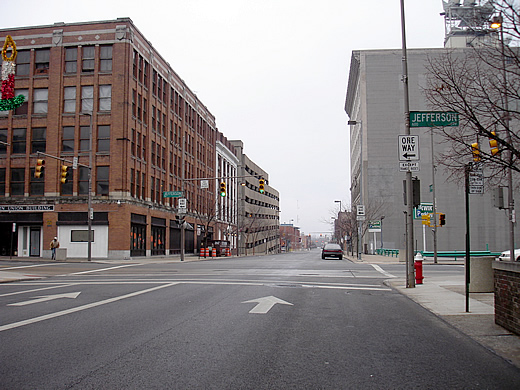

OLYMPUS DIGITAL CAMERA
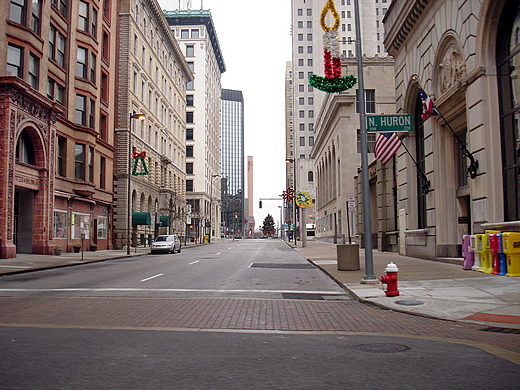
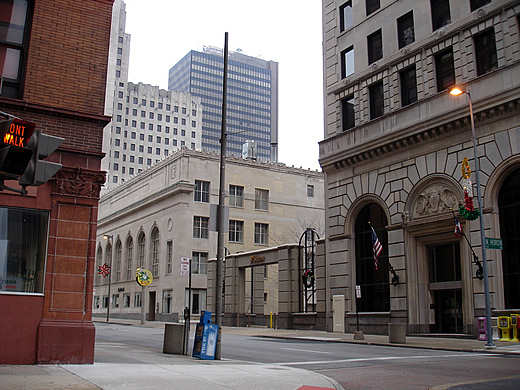
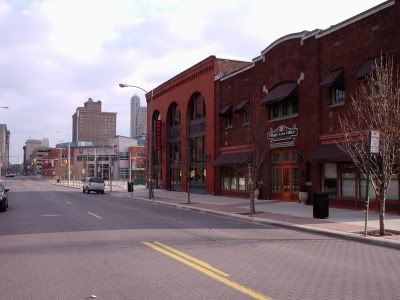
OLYMPUS DIGITAL CAMERA
* * *
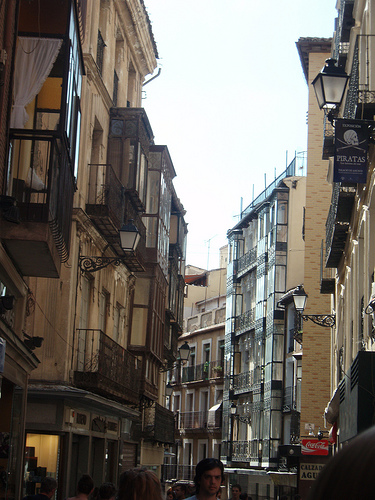
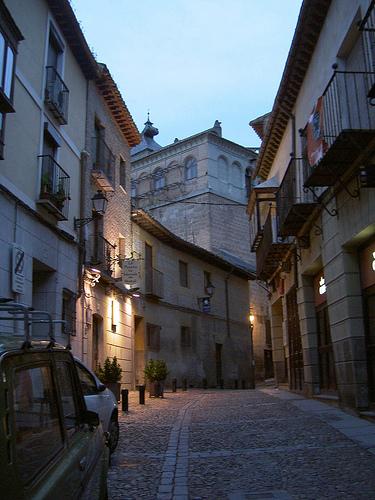
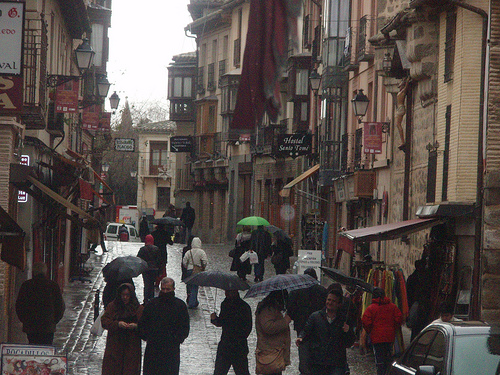
I like this photo. Happy people. Also, unlike some of those streets which tend to be a bit featureless, we have lots of shops and signs here, and a bit more interesting architecture In general, I like the Asian format better, where there is over-the-top shops and signs everywhere. It looks like a bit of a mess in a photo, but it is tons of fun.

See what I mean? Chinatown, Yokohama
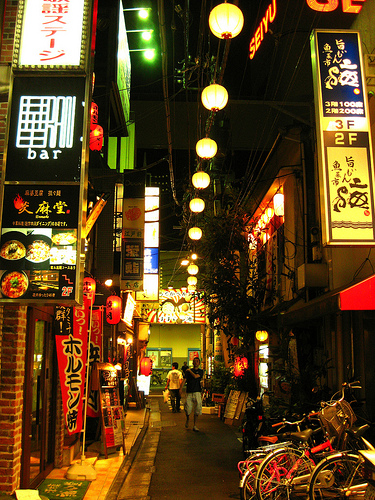
Sangenjaya, Tokyo.
But, back to Toledo.
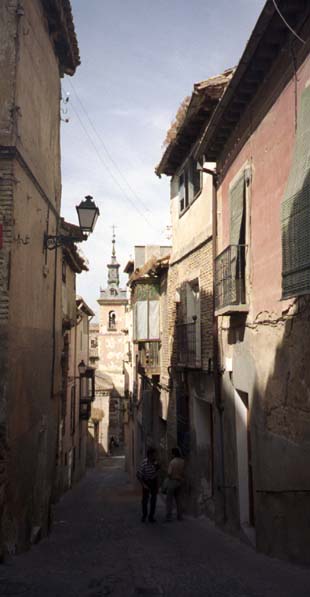
A quiet street like this is nice when you want to get away from the hugger-mugger of the commercial areas. Good residential street.
Seems kinda boring compared to Sangenjaya though, doesn’t it?
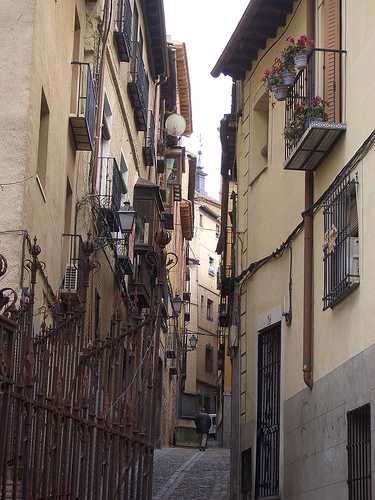
* * *
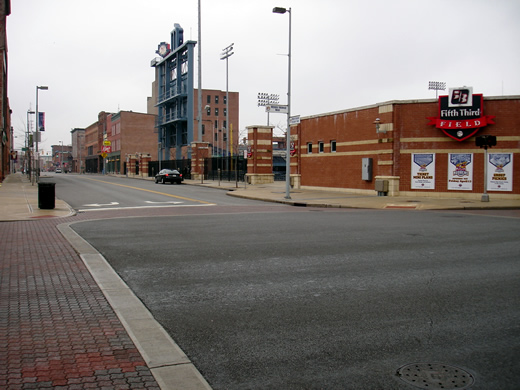
The downtown skyscraper areas, which are the most attractive bits of the 19th Century Hypertrophic City, tend to be only a small part (under 10%) of the city as a whole. Most of the typical 19th Century Hypertrophic City tends to look like ths.
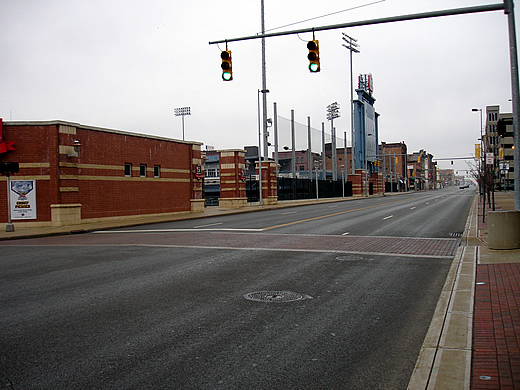
That megaroadway is a lot less appealing without megabuildings. Certainly no place to walk.
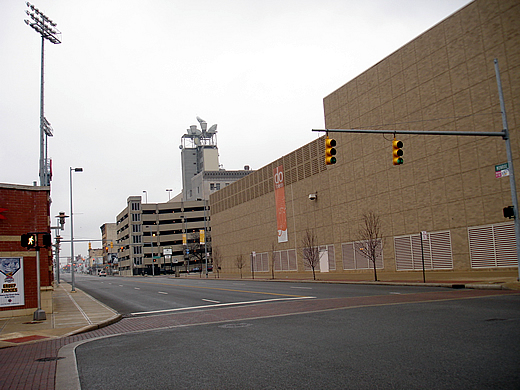
Monolithic.
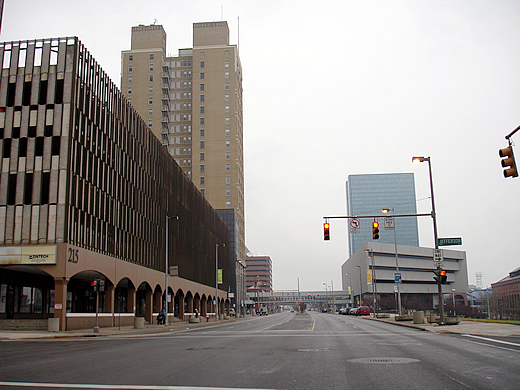
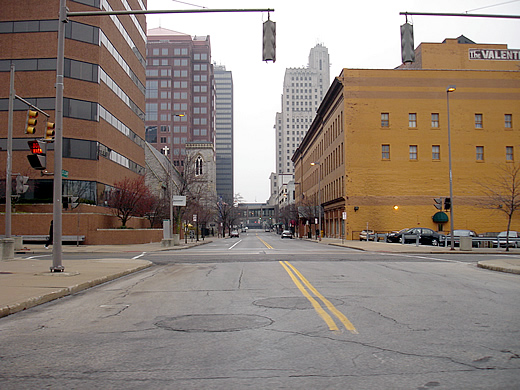
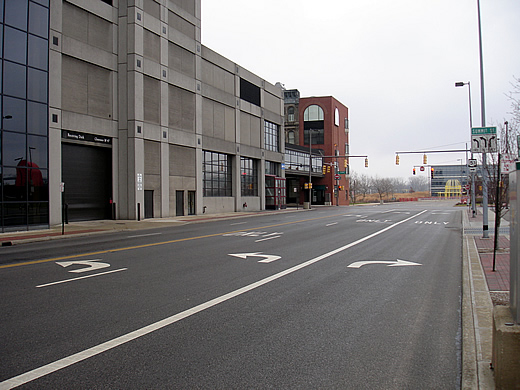
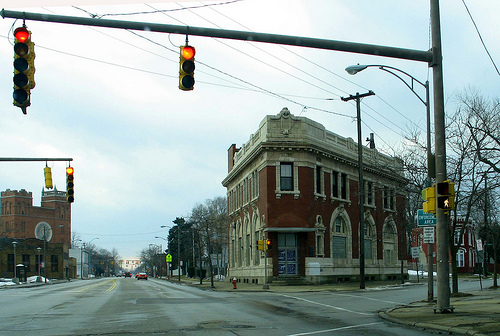
This is actually a nice building, looking rather forlorn as it faces the usual mega-roadway.
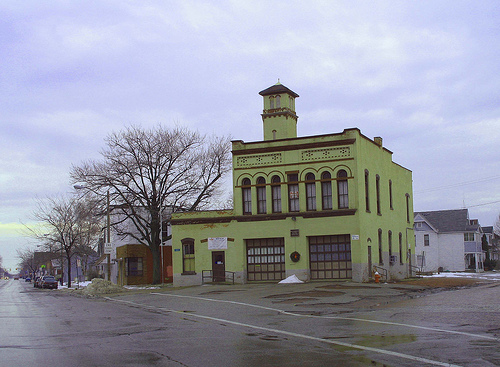
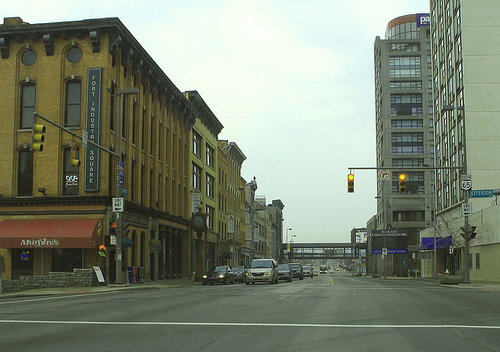
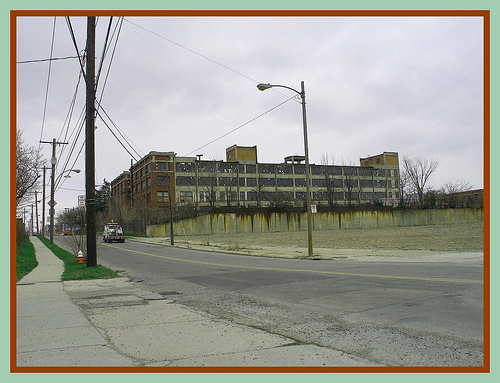
The 19th Century Hypertrophic City doesn’t age well. Outside of the downtown commercial areas, where there’s enough money to keep things in shape, it tends to become rather decrepit. Remember, this is the wealthiest country on earth. Those old European cities last for hundreds of years, and still look good.
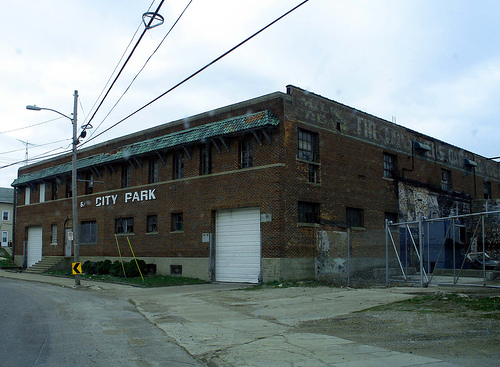
As per the Heroic Materialist aesthetic, many buildings were made as cheaply as possible. In those days, that meant blank brick boxes.
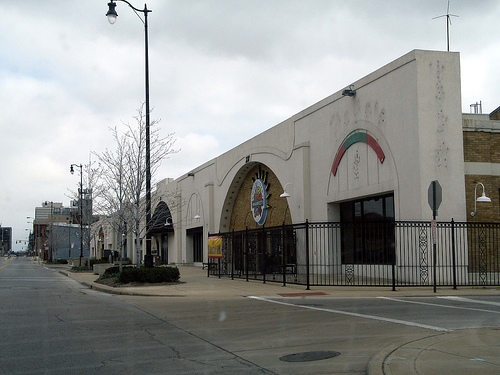
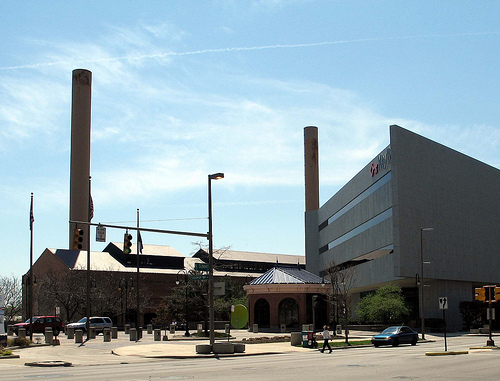
I’ll leave you with a few more shots of Toleo, Spain to raise your spirits a bit.
* * *
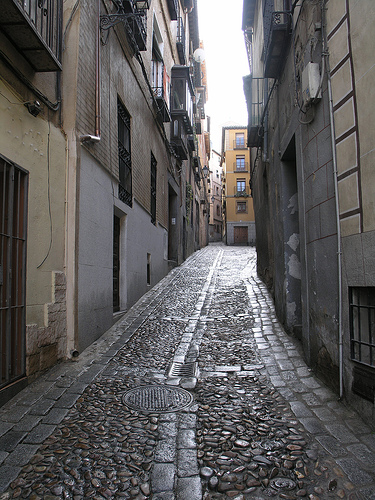
When streets are pedestrian-sized, they can be paved nicely.
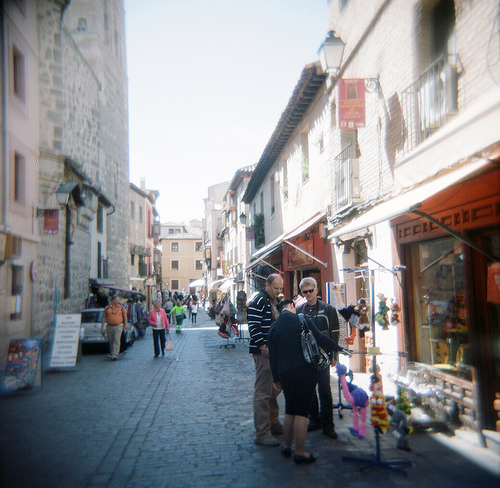
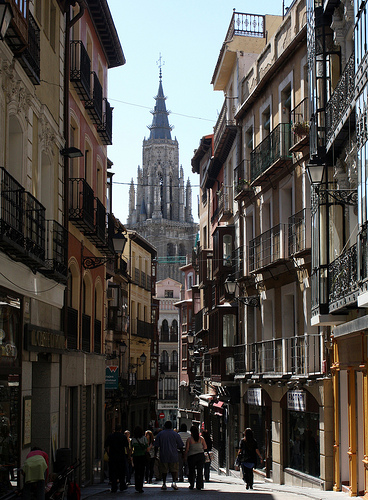
One of the reasons I’m spending so much time on the 19th Century Hypertrophic City is to demonstrate that, despite predating cars by 100 years, it is a failure. It is not very good for pedestrians, and not very good for cars either. This problem was resolved after World War II — not by making cities better for pedestrians, but by making them better for cars. This is the Suburban Hell format, with lots of parking, even more and wider roadways, and lots of Green Space to make all the pavement and traffic less miserable.
The tendency today, especially among those in the U.S., is to try to make Suburban Hell a little more pedestrian-friendly, but without giving up cars altogether. Since there are so many examples of 19th Century Hypertrophism around, and this seems “traditional” to Americans, the results tend to follow the 19th Century Hypertrophic format. Unfortunately, this didn’t work the last time around, and it won’t work today either. Oddly enough, when you fully embrace the Traditional City, then you can add cars too and it is generally OK. I don’t think Toledo, Spain has a regulation against automobiles. Probably, shops and so forth get their deliveries by truck. Probably there is bus service to other cities. However, the personal automobiles just sort of naturally disappear. Nobody needs them anymore, and they are expensive and hard to maintain.
If you really want one, you can rent a car for the weekend. Nobody ever does. Because, a comfortable, beautiful carfree Traditional City like Toledo, Spain is not the kind of place where you spend Monday through Friday thinking: “I need to get out of here.”
In fact, it’s the kind of place that people in the U.S. go on their vacation! How many people from Toledo, Spain visit your shitty suburb?
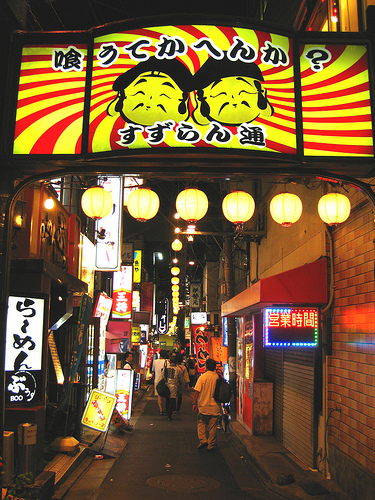
Sangenjaya, Tokyo.
You’ll never find a place like this in the 19th Century Hypertrophic City.
Other comments in this series:
January 31, 2010: Let’s Take a Trip to New York 2: The Bad and the Ugly
January 24, 2010: Let’s Take a Trip to New York City
January 10, 2010: We Could All Be Wizards
December 27, 2009: What a Real Train System Looks Like
December 13, 2009: Life Without Cars: 2009 Edition
November 22, 2009: What Comes After Heroic Materialism?
November 15, 2009: Let’s Kick Around Carfree.com
November 8, 2009: The Future Stinks
October 18, 2009: Let’s Take Another Trip to Venice
October 10, 2009: Place and Non-Place
September 28, 2009: Let’s Take a Trip to Barcelona
September 20, 2009: The Problem of Scarcity 2: It’s All In Your Head
September 13, 2009: The Problem of Scarcity
July 26, 2009: Let’s Take a Trip to an American Village 3: How the Suburbs Came to Be
July 19, 2009: Let’s Take a Trip to an American Village 2: Downtown
July 12, 2009: Let’s Take a Trip to an American Village
May 3, 2009: A Bazillion Windmills
April 19, 2009: Let’s Kick Around the “Sustainability” Types
March 3, 2009: Let’s Visit Some More Villages
February 15, 2009: Let’s Take a Trip to the French Village
February 1, 2009: Let’s Take a Trip to the English Village
January 25, 2009: How to Buy Gold on the Comex (scroll down)
January 4, 2009: Currency Management for Little Countries (scroll down)
December 28, 2008: Currencies are Causes, not Effects (scroll down)
December 21, 2008: Life Without Cars
August 10, 2008: Visions of Future Cities
July 20, 2008: The Traditional City vs. the “Radiant City”
December 2, 2007: Let’s Take a Trip to Tokyo
October 7, 2007: Let’s Take a Trip to Venice
June 17, 2007: Recipe for Florence
July 9, 2007: No Growth Economics
March 26, 2006: The Eco-Metropolis

